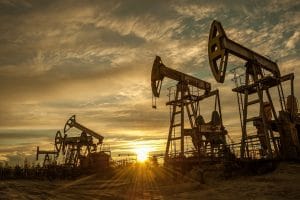 The more companies have benefited from modern heat exchangers, the more popular the innovative thermal solutions have become in virtually all industries. In areas from manufacturing to food and beverage production, and more, companies have been able to lower costs, improve productivity, and completely streamline their electrical thermal management systems. For some industries, however, the benefits of heat exchangers have been harder to achieve due to the particularly hazardous conditions under which they operate. In addition to more efficient and productive electrical cooling, thermal solutions for hazardous locations also have to provide higher-than-usual levels of safety and ingress protection, among other things.
The more companies have benefited from modern heat exchangers, the more popular the innovative thermal solutions have become in virtually all industries. In areas from manufacturing to food and beverage production, and more, companies have been able to lower costs, improve productivity, and completely streamline their electrical thermal management systems. For some industries, however, the benefits of heat exchangers have been harder to achieve due to the particularly hazardous conditions under which they operate. In addition to more efficient and productive electrical cooling, thermal solutions for hazardous locations also have to provide higher-than-usual levels of safety and ingress protection, among other things.
How heat exchangers benefit companies
The reason companies have benefited from heat exchangers is because they’ve revolutionized the way they approach cooling electrical enclosures, control panels, and other equipment. They utilize minimal equipment, such as heat pipes, cold plates, and occasionally, one or multiple small fans, instead of the large and complicated machinery that traditional thermal solutions are made of. This means they don’t need as much energy, though they can operate continuously with little need for repairs, maintenance, or part replacements. The savings in energy usage and maintenance alone can have a substantial impact on most companies’ overhead costs.
Additional considerations for hazardous locations
Most companies face several common concerns when it comes to their electrical thermal management systems. The amount of energy that they use is one, for example. However, companies that operate in hazardous locations, such as oil and gas companies, also have to consider the level of safety that their thermal solutions provide. That includes high-performance capabilities with minimal maintenance to limit downtime and the need for human interaction, as well as exceptionally high levels of ingress protection to prevent hazardous substances from compromising vital equipment.
Outfitting heat exchangers for hazardous locations
To meet the unique demands of applications in hazardous locations, many modern heat exchangers can be designed specifically for optimal safety as well as optimal efficiency. For example, the use of high-quality, neoprene gaskets and seals helps ensure there is no interaction with hazardous substances in the environment and the inside of the heat exchanger or electrical enclosure. By using eco-friendly cooling fluids, such as water, the risks of adverse chemical reactions or the release of pollutants is also eliminated.
For more information about how heat exchangers can work in hazardous locations, call Noren Thermal Solutions in Taylor, TX, at 866-936-6736.







